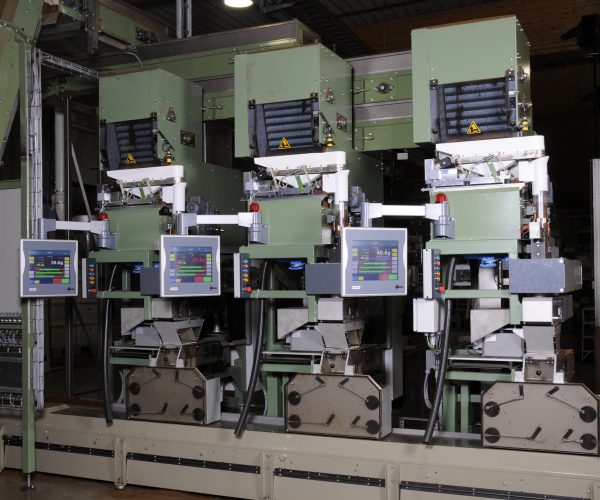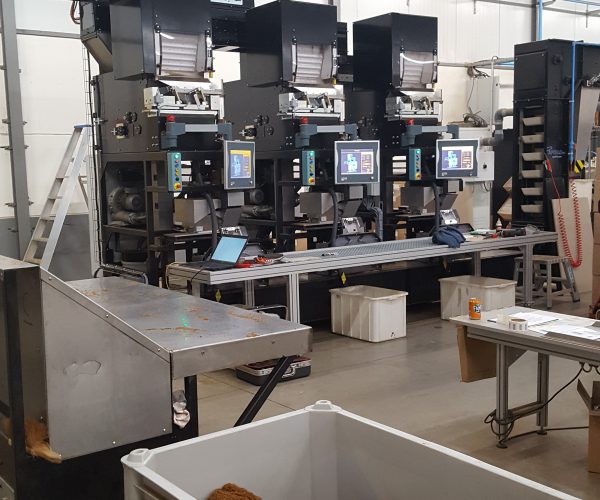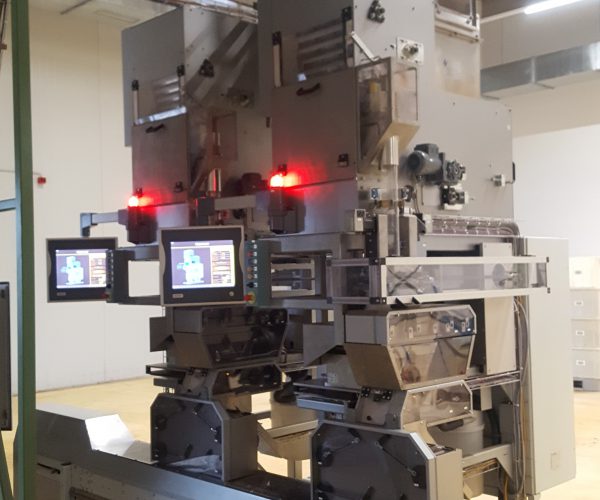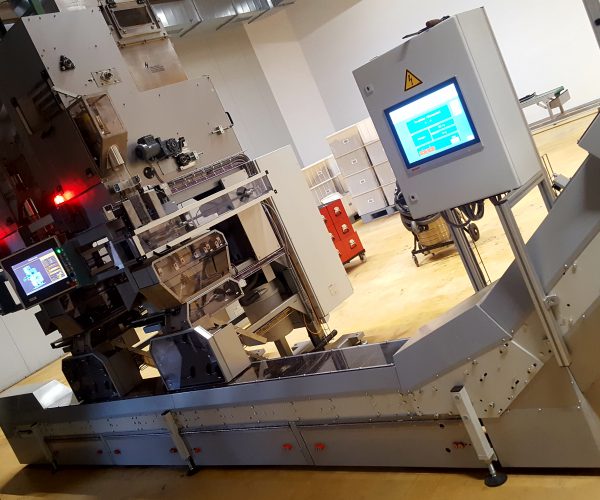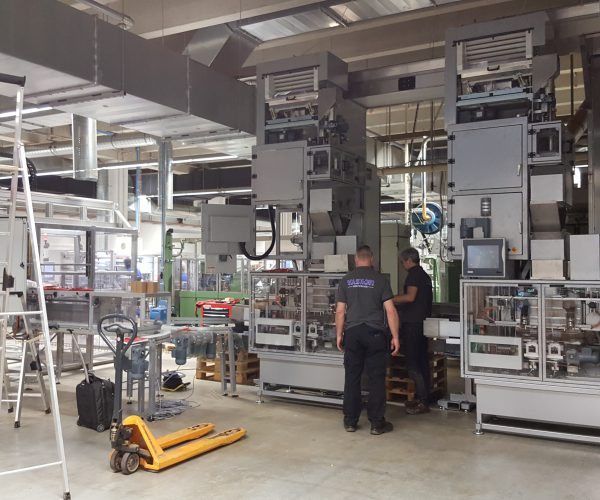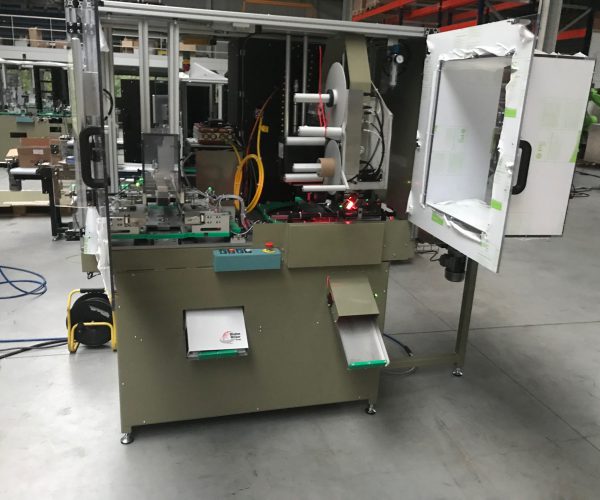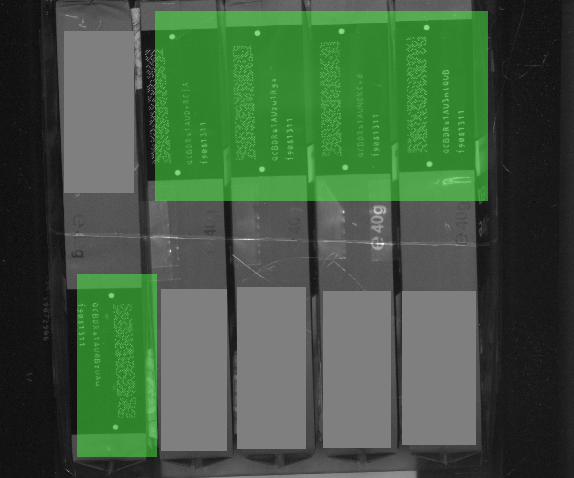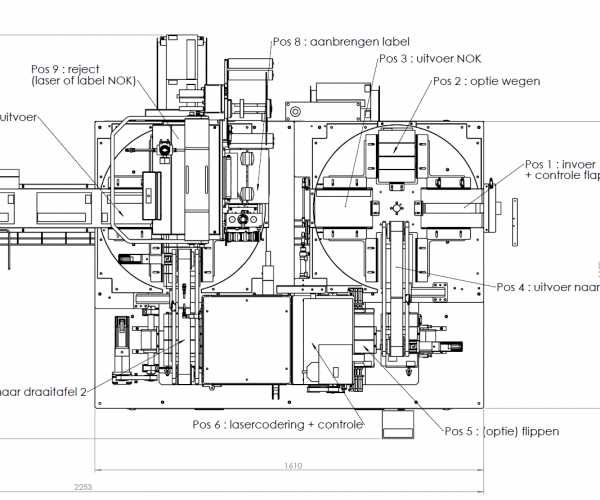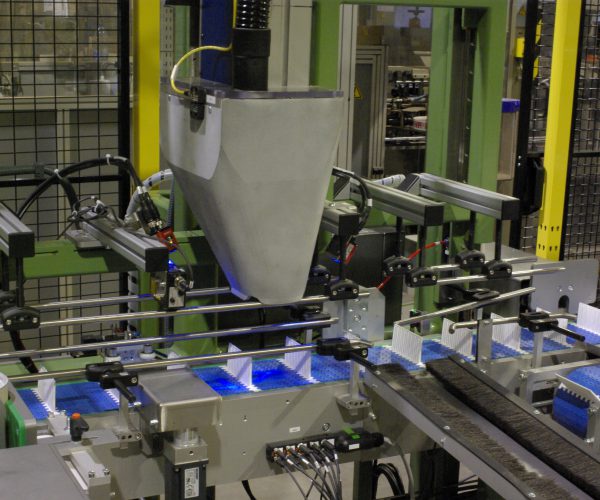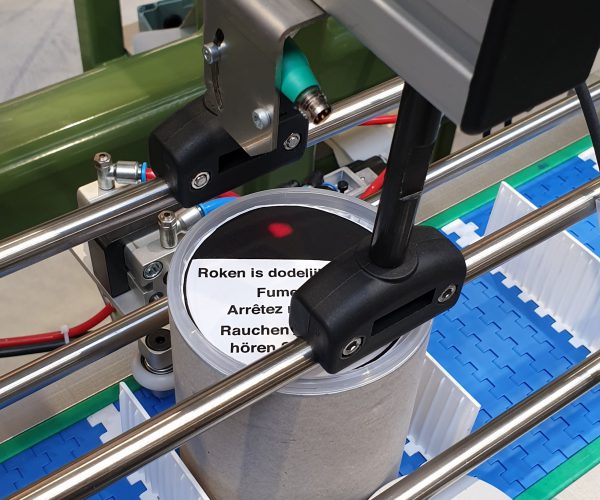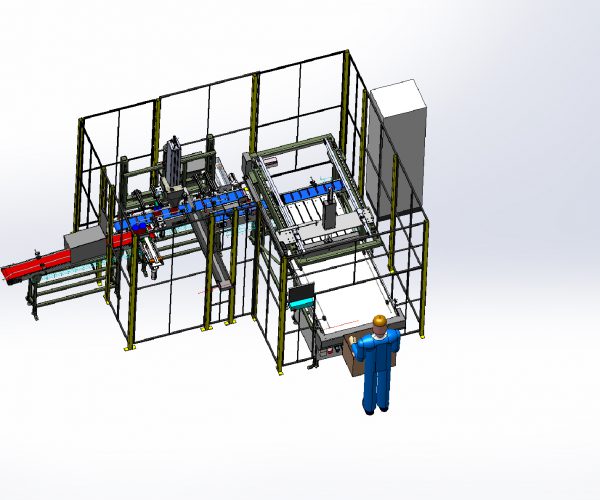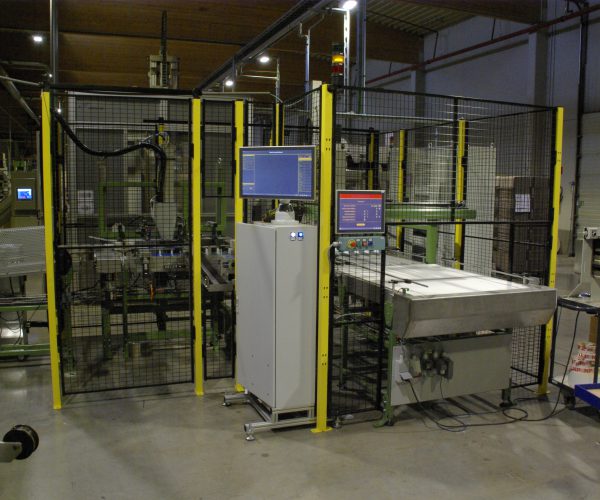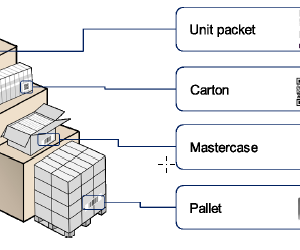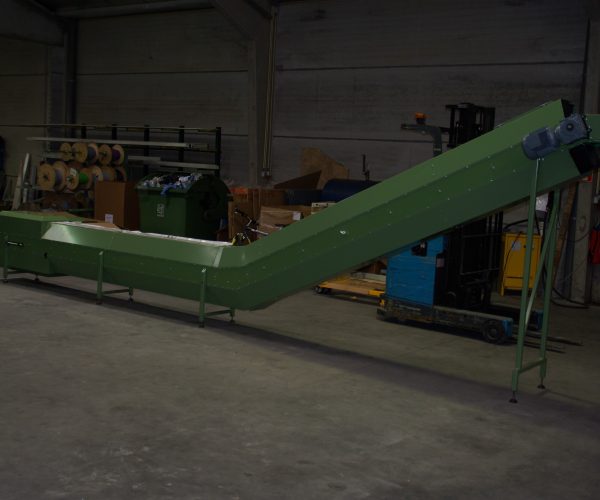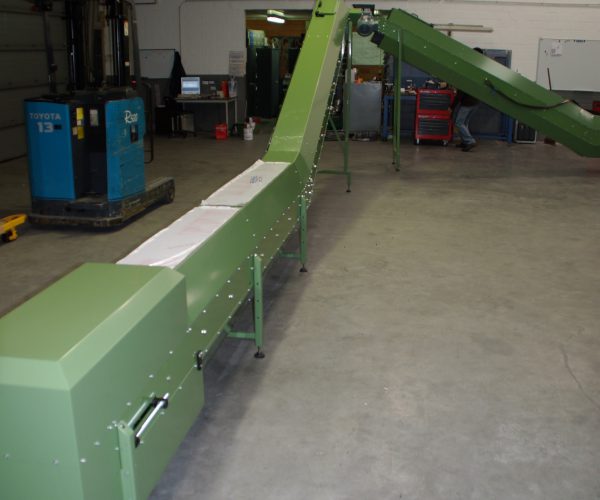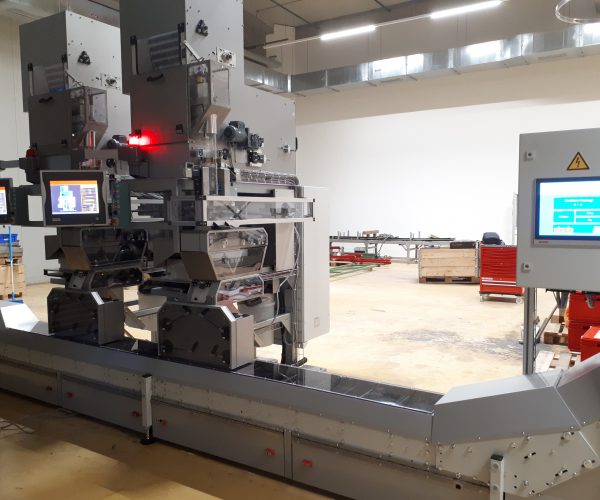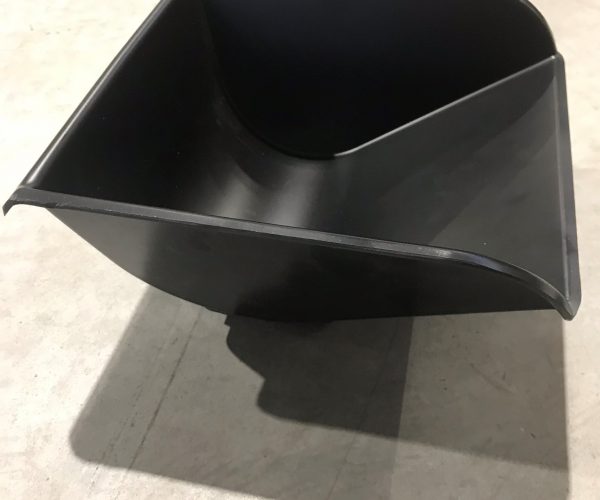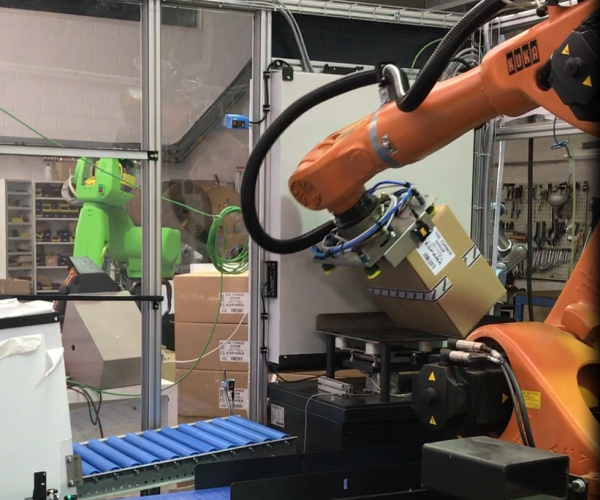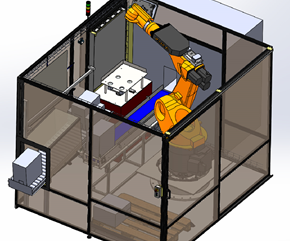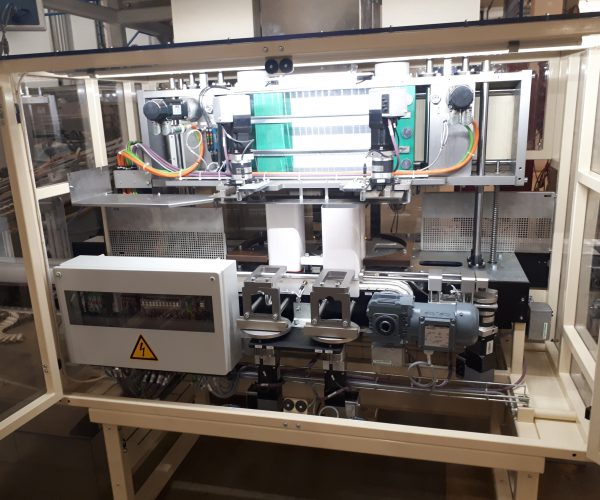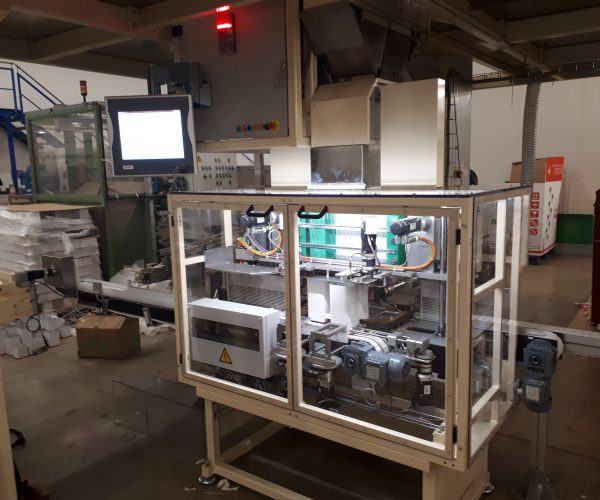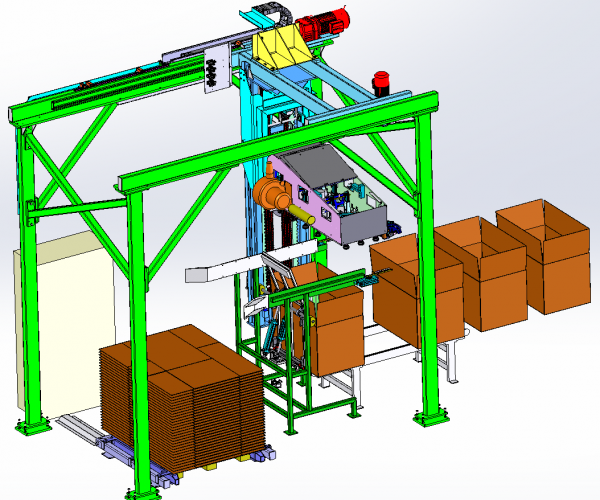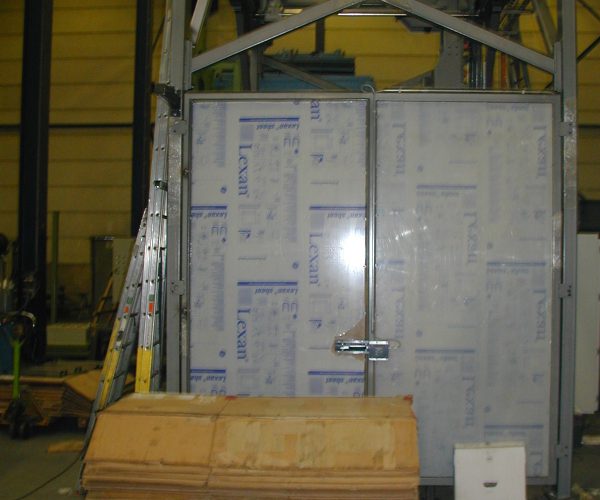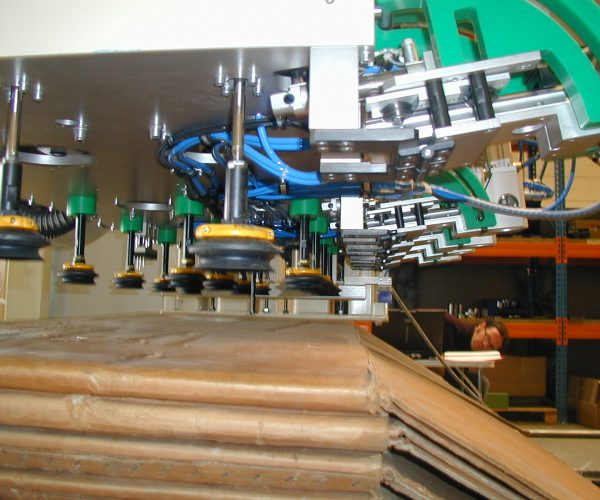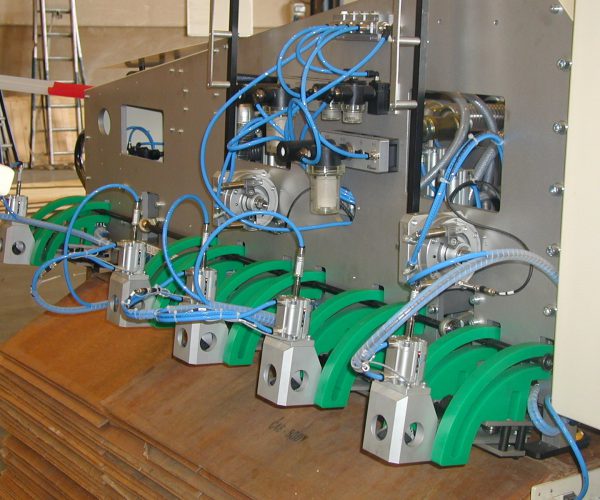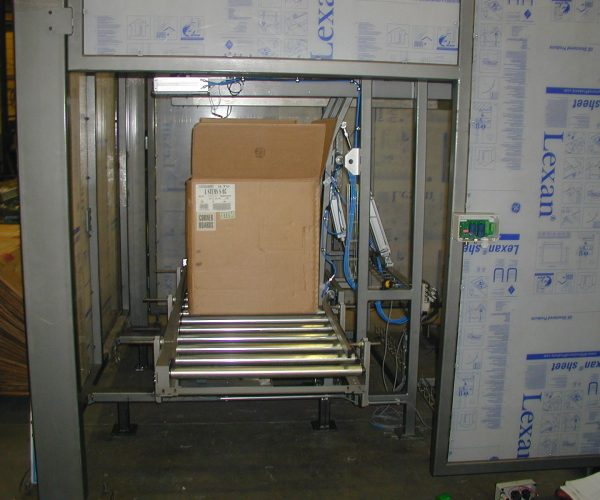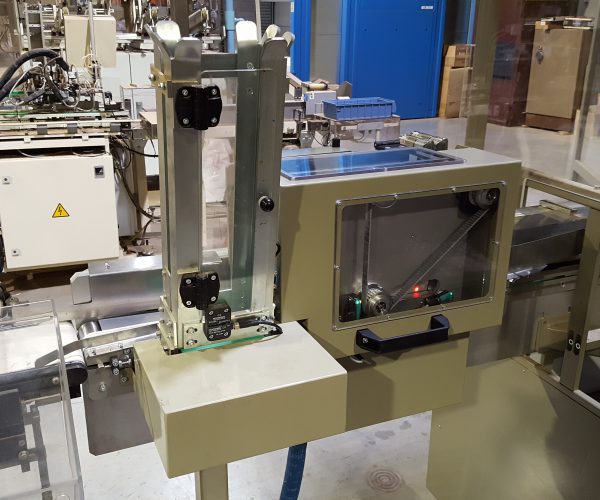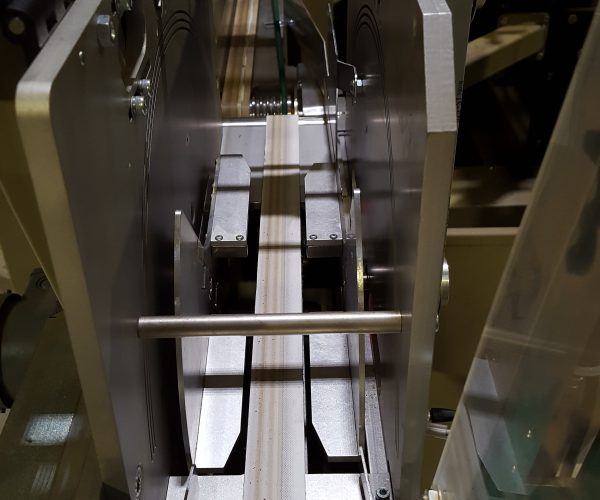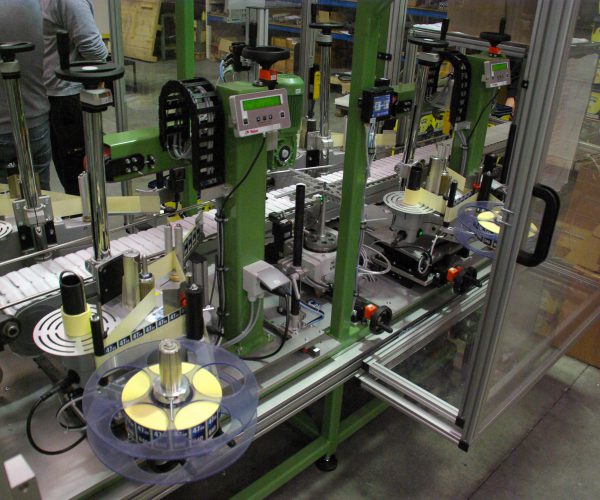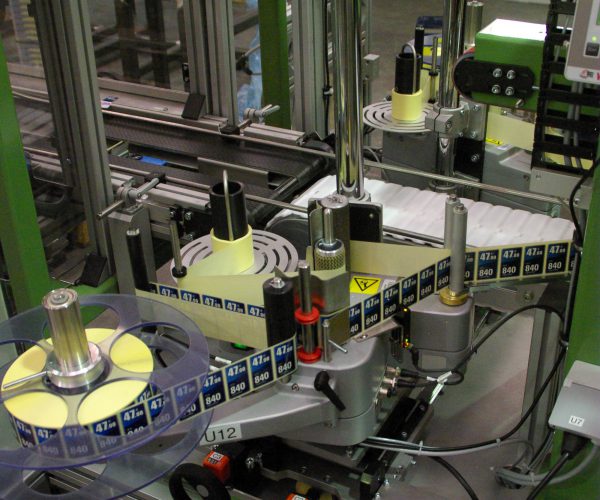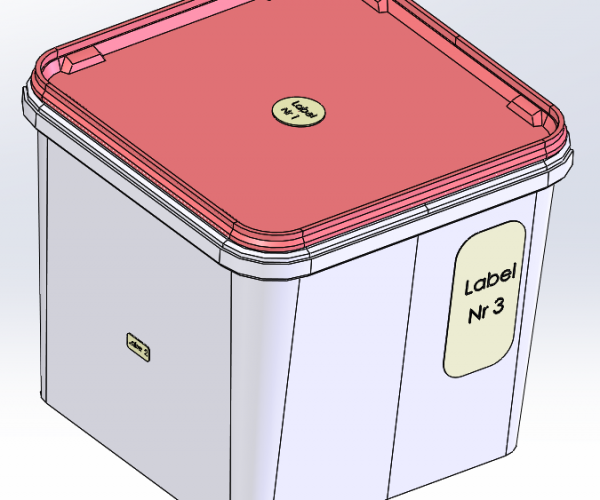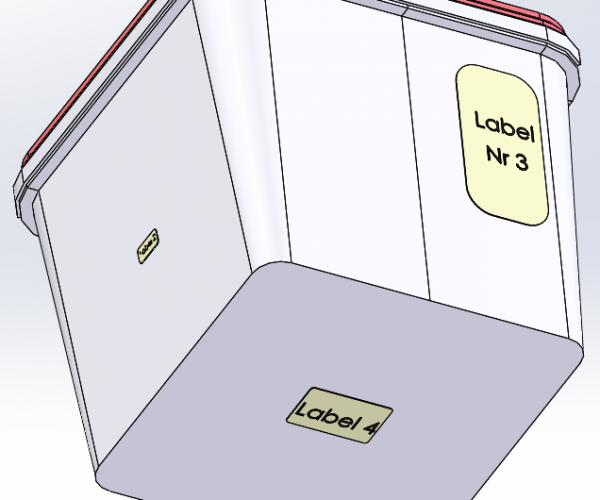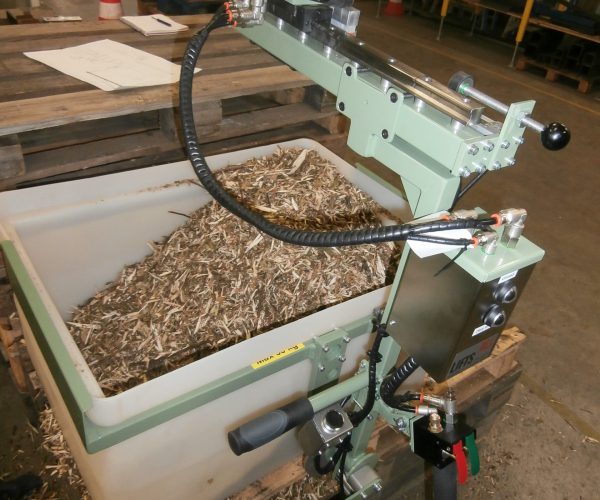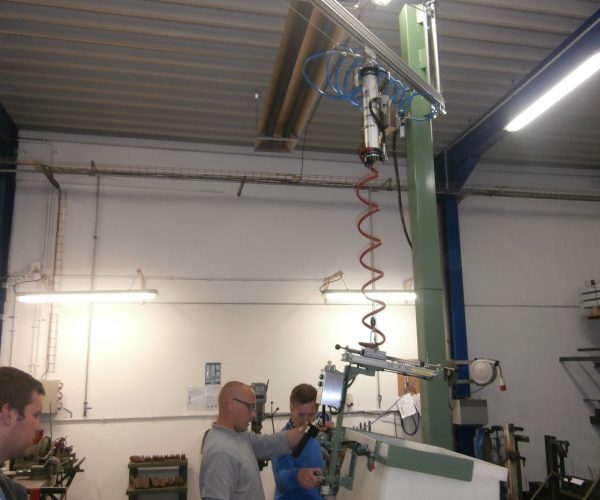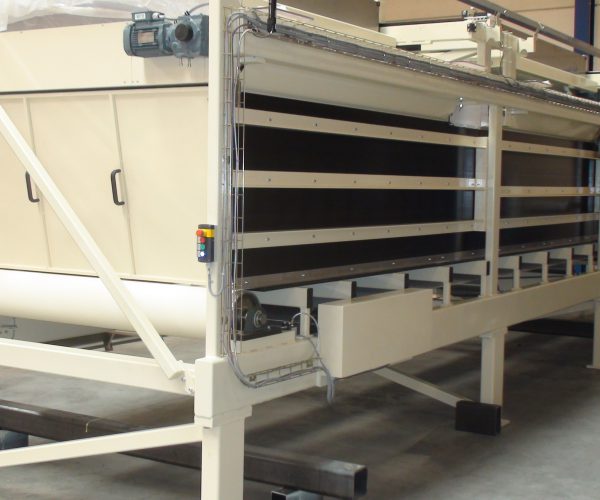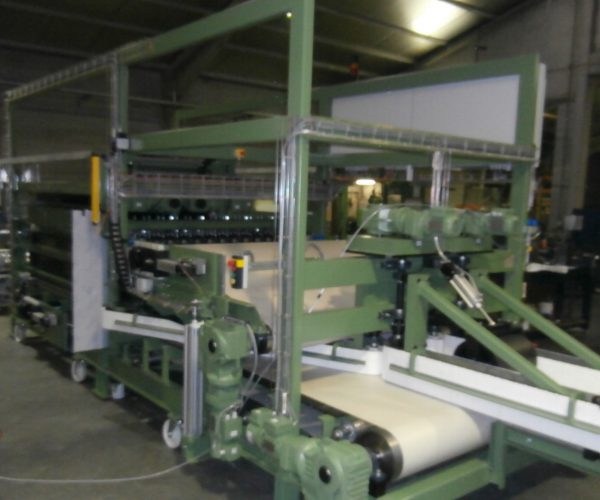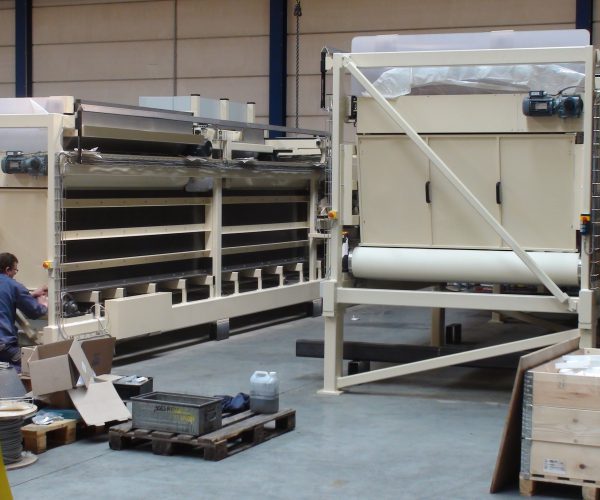We build custom-made machines, specially made for the tobacco industry. Such as closing machines, bag filling machines, weighers, tax stamp machines, …
Tobacco Weigher (type 6052)
Main characteristics :
– Tobacco weigher for smaller portions of ryo-tobacco (typically used for pouches 20-50gr)
– Depending on the type of tobacco, a weighing range from 5 to 60 gr is possible. To achieve this complete range, additional format parts are required. The installed format parts are recognized by the machine so that adjusting limits are automatically updated.
– Performance : up to 55+ portions per minute complying with the e-regulation.
Brochure
Tobacco Weigher (type CTW250)
Main characteristics :
– Tobacco weigher for larger portions of ryo-tobacco (typically used for cans/tins)
– Depending on the type of tobacco, a weighing range from 20 to 250 gr is possible. To achieve this complete range, additional format parts are required. The installed format parts are recognized by the machine so that adjusting limits are automatically updated. To fill tins with very big volumes 2 or more portions of tobacco are filled in one tin; this decreases the performance of the machine in terms of tins per minute.
– Performance : up to 40+ portions and tins per minute can be achieved complying with the e-regulation. A few numbers of what can typically be achieved with original fine-cut tobacco :
- 70 gr (eg tins of 95mm) : 40+ tins/minute
- 150 gr : 30 tins/minute
- 200 gr (eg tins of 130mm) : 25+ tins/minute
- 300 gr : 20 tins/minute
Brochure
Track and trace solution: Laser coding of tobacco pouches
Main characteristics :
- Typically used to apply individual UID’s (User Identification) on pouches
- Bundles with pouches (5 or 10 pouches per bundle) are entering the machine, the UID is applied on the individual pouches. This is achieved with a fiber laser (50W) which applies the laser coding through the plastic film of the bundle onto the individual pouches. Immediately after coding, the UID’s are verified with a vision system (as required by CE directive 2014/40/EU).
Brochure
Track & trace solution : Laser coding of round tobacco tins
This machine applies a laser code on the top lid of round tobacco tins (according to CE directive 2014/40/EU).
- The tins enter the machine on a continuous conveyor belt (infeed conveyor)
- The tins are orientated radially, and laser coded. Code is verified.
- The tins leave the machine on an outfeed conveyor (the number of tins that leaves the machine perfectly matches the required number for one aggregate box). After closing the box, the operator applies a label on the box (with an aggregate track & trace code printed on it) and scans it. Only after scanning this label, the next set of tins leaves the machine
Brochure
Track and trace solution: Serialization of tobacco pouches
This consists of all required soft- and hardware, allowing to realize full serialization (track & trace), according to CE directive 2014/40/EU (concerning the manufacture, presentation and sale of tobacco and related products) + commission implementing regulation (EU) 2018/574 on technical standards for the establishment and operation of a traceability system for tobacco products :
- Software for serialization.
- This software requests individual UID’s (User Identification) from an authorized ID issuer. The software keeps track of the number of UID’s that is available, and makes sure that additional codes are requested from the ID-issuer when required in production
- The software puts the UID’s at disposal for production (with sufficient buffer). UID’s can be applied on individual products in different production lines in the factory.
- The software keeps track of each aggregation :
- unit packs (each having a UID) are aggregated into bundles (each bundle getting a unique code)
- bundles (each having a unique code) are aggregated into boxes (each box getting a unique code)
- boxes (each having a unique code) are aggregated into pallets (each pallet getting a unique code)
- The software communicates the final aggregation (with all its UID’s) to the ID-issuer
- In case of an error, the software allows to disaggregate
- Each pallet can be disaggregated to box level
- Each box can be disaggregated to bundle level
- Each bundle can be disaggregated to unit pack level
- By this way unit packs (with their UID) can be re-aggregated in case something went wrong during aggregation.
- The database can be searched very easily for codes :
- UID’s are matched with each of the aggregate identification codes
- UID’s can be searched easily in the database.
- Individual UID’s can be searched quickly. The database allows to search in which bundle the unit pack is located, in which box this bundle is packed, or on what pallet this box has been palletized.
- identification numbers of the aggregate package can be searched quickly (bundle level, box level or pallet level), including all of its contents
- the software allows to search quickly for parents – or children – of a unit pack or an aggregated pack.
Brochure
Bucket chain conveyor (+ buckets)
For transport of small portions of tobacco to a pouch packing machine
The bucket conveyor is typically combined with 2 or 3 weighers (6052 weigher type) :
- If combined with 2 weighers (type 6052), a typical speed of 110+ portions/minute is reached. If for some reason a weigher fails, the speed of the line drops to 50%.
- If combined with 3 weighers (type 6052) and CCS (Central control system), the work load is equally divided over the 3 weighers. If for some reason one of the weighers fails, the other weighers will speed up, as a consequence the total output of the line is not affected.
Brochure
Robot palletizer for boxes filled with tobacco pouches
Main characteristics :
- The robot cells picks up boxes from a conveyor, and palletizes the boxes on a pallet. The cell has the following functions integrated in it
- Possibility to check the weight of the box before palletizing
- Possibility to check the presence of a barcode label on the box
- Possibility to tilt the box before palletizing
- Possibility to place an intermediate cardboard sheet between 2 layers of boxes on the pallet
- can be used to stack boxes that are filled with bundles of pouches (one box typically contains 30 bundles x 5 pouches/bundle = 150 pouches in one box).
- Performance : 50s/box (including tilting / weight control / barcode control; eventual additional operations not included)
Tobacco can filling station
Main characteristics :
- This unit automatically positions the tins – coming from a conveyor – under a CTW250 weigher; after filling the tins are evacuated to a conveyor
- Performance : up to 45 cans/minute
Brochure
Case erector for tobacco container (C30 / C48 / C90 / C96)
This case erector automatically forms virgin and re-used telescopic and non-telescopic boxes C48 (or other box types – C30 / C90 / C96 upon request). A stack (pallet) with folded boxes is entered in the machine, the machine opens (unfolds) the box, and places the formed box on a conveyor. From there on the box continues its way in the factory.
Performance: 2 cases/minute
Brochure
Pouch flipper
This unit is used in order to flip every nth pouch (turn it upside down) in a continuous flow of pouches. This is typically done when pouches are packed in bundles by means of transparent film.
The pouch flipper makes sure that the pouch barcode is invisible when packed in a bundle (preventing any mistake while scanning the barcode of the bundle ==> all individual pouch barcodes remain invisible when packed in the bundle).
Brochure
Labelling machine for square buckets of tobacco
Main characteristics :
- The machine is used to apply labels on square buckets
- A label can be applied on each of the 6 sides of the square bucket (each of the 4 vertical sides of the bucket + the upper side + the bottom side), or on all 6 sides (or a number of sides depending on the recipe that is chosen in the menu)
Brochure
Manipulator for ergonomic manipulation of plastic boxes filled with tobacco
This unit is typically used for ergonomic manipulation (by an operator) of plastic boxes (typical weight 29kg), and prevents fatigue of the operator, or physical back problems (due to continuous manipulation of heavy crates. The manipulator is typically connected to an overhaul crane or jib crane.
The box can be lifted, moved (within the XYZ range of the crane), and tilted 180° (ni order to empty the tobacco in a machine ==> typically used to feed cut tobacco into the feeder that brings the tobacco to our weighing units, for further packaging).
Brochure
Straight layer (for finer cutting of tobacco leafs)
This machine is used in primary to improve cutting quality of the tobacco leafs.
- Tobacco leafs fall into the machine (back side of the machine).
- The machine orientates the leafs in such way that all veins in the tobacco leafs tend to be parallel (perpendicular to the cutting knife)
- The machine compact the tobacco leafs, and creates an infinite extruded flow (with rectangular shape)
- The exit of the machine is directly coupled to a cutting machine (eg Hauni, or similar). The extruded flow is cut, as the orientation of the veins in the leafs is mainly perpendicular to the cutting knife, the veins will be cut, so the machine prevents the presence of long veins in the cut tobaccoAdvantage : finer cutting of the tobacco (significant reduction of long veins in the cut tobacco).

